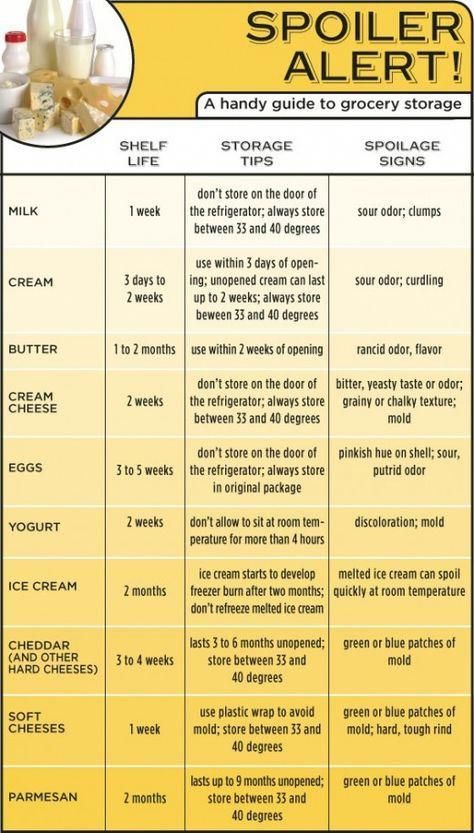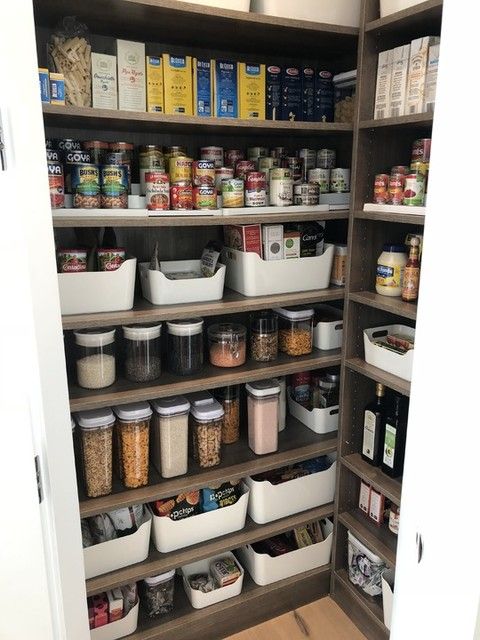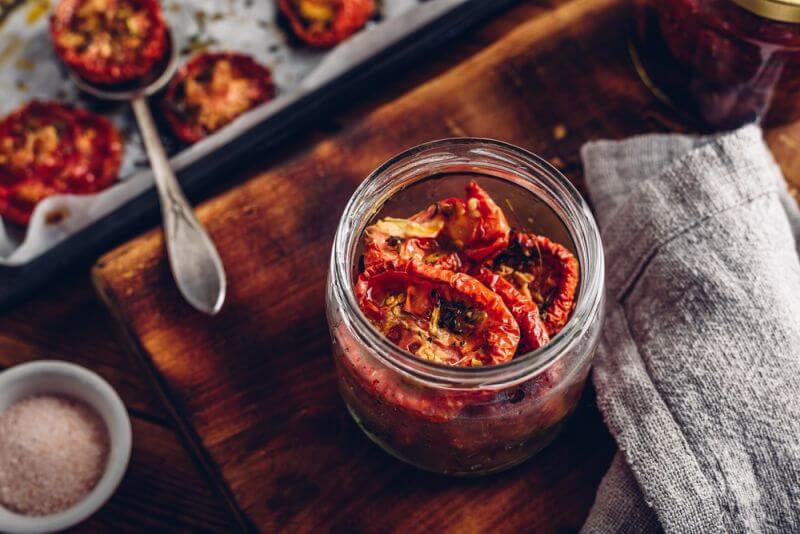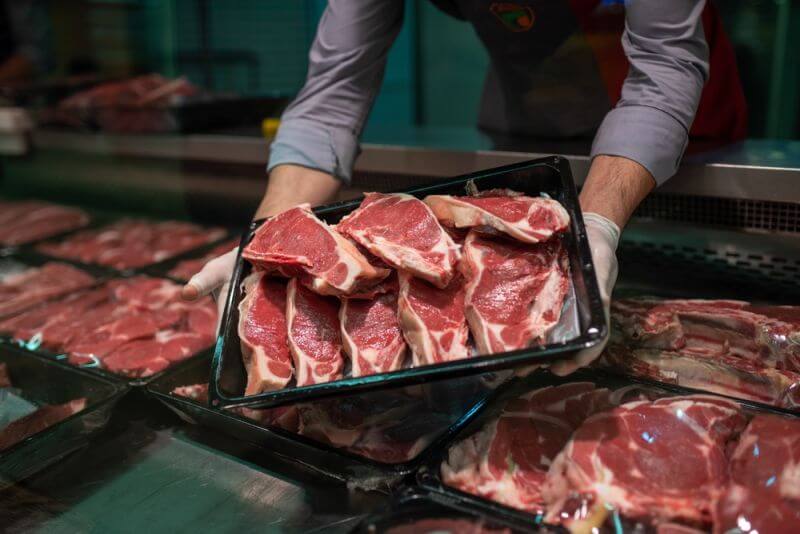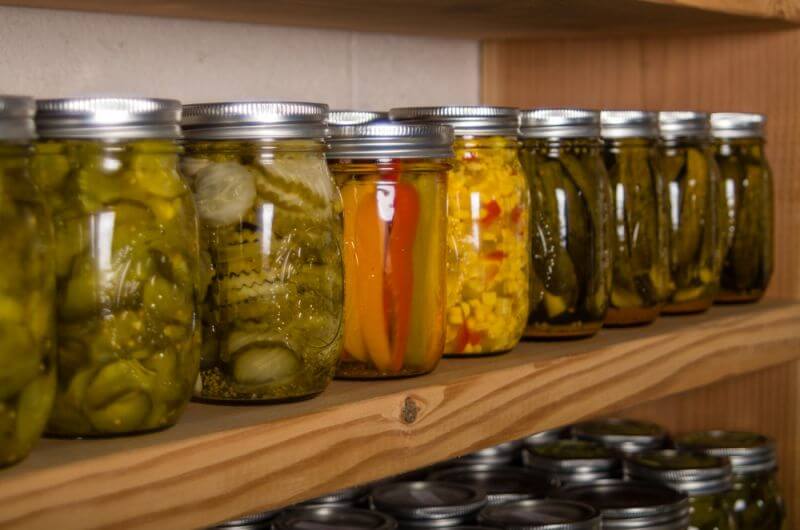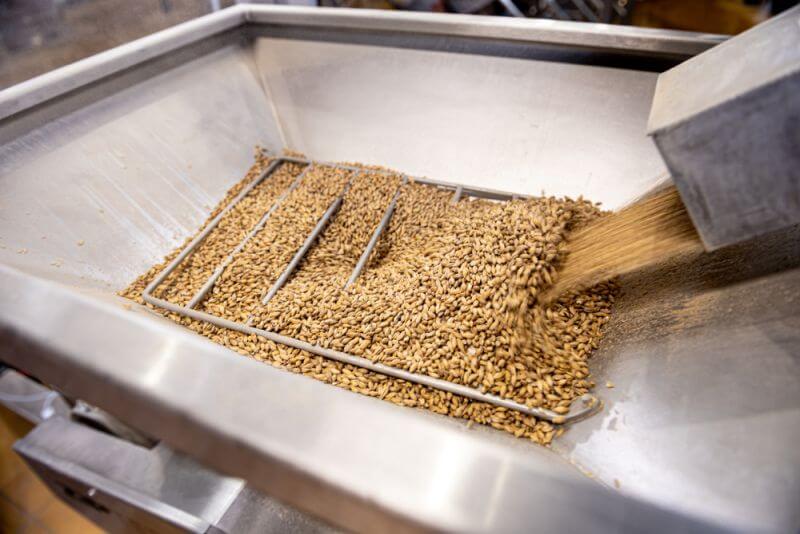All the time and effort you spend building a survival pantry will be wasted if the food is not stored or packaged correctly.
Even more, if you don’t figure out how to protect your pantry, your food will end up being stolen.
I honestly believe that in these uncertain times, a carefully planned and stocked pantry is a must not only for preppers and survivalists but for every American. When it comes to the basic preparedness measures such as food and water, you should attend to it as if the lives of your loved ones depend on it, because someday it might. Your food should last for as long as you need it and you should be able to use it at any given time without worrying about spoilage.
I find it alarming that more than 55% of Americans have less than a 3 day supply of food in their homes. If you think about it, when a disaster will hit close to home, your pantry will make the difference between having a full belly and going to the streets to salvage what can be still salvaged.
To properly understand how food should be stored, one needs to learn about the issues to be expected during long-term food storage. In most cases, there are a few situations that will ruin your food for good without even being aware of.
Moisture and air
Most preppers I know store dried grains in large quantities because grains are cheap, and if stored in proper conditions, they can have a shelf life of over 30 years. One thing I’ve learned over the years is that you need to establish the moisture content of the dried foods you intend to store. Since you probably don’t have enough knowledge about general moisture in grains, I suggest you acquire a digital moisture meter before you decide to store grains long-term.
Such tools are commonly used by farmers to establish moisture content in their grains. As a general rule, if you plan to store grains, the maximum moisture content should not exceed 10%. Anything above 10% will not store properly, and it’s also risky to can it. For beans, a favorite of preppers, the moisture content should be less than 10% to be properly canned.
Mold and bacteria require a high content of moisture to develop, and the same goes for insect infestation (hatching eggs, multiplying, etc.). To avoid moisture build up in your grains, the best thing you can do is to add some oxygen absorbers to the containers. Not only it will act as a drying agent, but at the same time, it stops the oil from foods to go rancid, thus avoiding the growth of fungi. Others may tell you to use desiccants to remove the moisture, but I can tell you from experience that oxygen absorbers are just as effective.
Remember…
If your food is exposed to oxygen, it will begin to break down, and the nutrients will degrade rapidly. All fungi and microorganism that could contaminate your food need an oxygenated environment to prosper. If you take out all the oxygen from the food storage equation, it will become impossible for bacteria and fungi to develop. All spoiled food should be discarded as it becomes a serious health risk.
Light
As a general rule of food storage, all the items you keep in your pantry should not be exposed to sunlight. If light gets into the pantry and foods are exposed to it, the food will eventually heat up and start to deteriorate.
Heating canned items will make the air in the headspace to expand. This will cause the lid or seal to break open, and microorganisms will contaminate the content of said containers.
Even worse, some of your jars may explode, and the residue spread all over the place will contaminate all the other food items in your pantry. Not to mention that cleaning up becomes a tedious chore. And least, but not last think about foods containing fats or oil. Exposing those foods to sunlight will accelerate the rancidity.
Heat
Some people improvise a pantry in the available space they have, and sometimes it happens to be in the vicinity of a heat source. Since heat is an enemy of your pantry, and it will drastically lower the shelf life of your food, there are some measures you need to implement.
For starters, all your foods should always be stored on shelves or pallets rather than putting them directly on the floor. As a general rule, keep in mind to leave some space around the containers and jars so that proper ventilation is assured. As a backup rule, I recommend installing a small fan with a net for insects and proper filters. Use an electric timer to program it or leave it on for as much as you like if electricity is not a problem.
By preventing the pantry from heating up and by assuring good ventilation, you will prevent sweating inside the cans, and you will also protect all the metal containers from rusting. When it comes to the proper temperature inside your pantry, it can be anywhere between 40 and 60 degrees Fahrenheit. Anything above 60 will decrease the nutritional value of your food, and as the temperature rises, the foods will spoil faster.
Rodents and insects
For some people, this may not seem like a big deal, but even if you seal your grains properly, there may still be insect eggs inside, the ones that were already in your grains when you bought them. Insects require an environment that has a 40% to 80% humidity to thrive. To reproduce, they need temperatures above 70 degrees Fahrenheit.
You should know that many of the insects that can spoil your food will not survive below 50 degrees Fahrenheit. As I said previously, you can get rid of them by using oxygen absorbers, or even better; you could freeze the grains. However, even with the freezing process, there’s a catch to it. Freezing the grains will kill the live insects, but it will not kill their eggs. It’s imperative to freeze the grains again, 30 days later, to make sure all insect eggs are gone.
I’ve heard that some people will heat the grains in their oven to kill the insects and their eggs, but it think such method it’s quite hard to master. The way they do it is to bake a ½ inch thick layer of grains in the oven at 150°F for about 15 minutes. I have no doubt you can get rid of the insects by doing so, but I also feel this could damage the grains.
Some people prefer to buy grains that are pre-cleaned, but once again, you can never be 100% sure they aren’t contaminated. If you follow this path, I recommend to fan the grains and check for contaminates.
As for mice and other rodents, the best method to keep your pantry free of such pests is not to install traps (although this may work) but rather to keep a clean pantry. All rodents are attracted by the smell of food particles that are still present on the outside of the containers or on the floor of your pantry. To be on the safe side, I prefer to wash the containers with soap and water, before storing them in the pantry.
Laziness
This is perhaps the biggest killer when it comes to our health, and all sorts of health experts and doctors will tell you that laziness kills. While this may be true, laziness is one of the worse enemies of your pantry, and here is why.
After working for a year to stock up your pantry and once you manage to get everything you need, it comes that self-achievement feeling that dims your awareness. You may be right to feel good about yourself and the effort you’ve put in building and equipping your pantry, but it doesn’t stop there.
Getting too comfortable will make you forget about the things you should be doing. Things like checking the temperature, cleaning the floor and overall the entire pantry, rotating the food, discarding compromised items, and so on.
To avoid compromising your pantry, I recommend implementing a “buddy system” for your pantry. A system that you can put in place with your family members, based on trust and respect for each other’s work (yeah, I know this may sound corny). To keep it simple everyone in your family should pitch in to keep the pantry safe.
The work is divided among family members, and it provides an exact schedule for everyone. Everyone should rotate their responsibilities to make sure all the pantry related chores are covered. You can make a schedule, and you can check their work to make sure they did a good job. This is a system I recommend implementing because it makes the work seem less redundant, and it keeps your pantry well maintained.
Protecting your pantry
When it comes to protecting your pantry, I’m not referring to guarding it 24/7 armed to the teeth. It’s more about how you secure it to sleep better at night without worrying that someone may steal your supplies.
For basic protection measures, here are some suggestions:
- Make sure you design your pantry so that it’s located out of sight, regardless if you build it inside your home or outside.
- If possible, select a site for your pantry outside, in a hidden location, distance it from your main property. For this to work, I recommend building a cellar.
- Make it inaccessible to others by building a natural perimeter around it or by camouflaging it with native flora.
- Install a good door with a sturdy mechanism.
- Install a perimeter alarm.
The main point here is that you could protect your pantry depending on the layout of your property and the possibilities it offers. Keep in mind that only you and your loved ones should be aware of its whereabouts and the contents it hosts.
Having a backup plan
The following is a lesson I’ve learned a few years back from a WWII veteran during my trips to Europe. On the Europe war front, it’s well known that the Russians had a despicable behavior everywhere they went regardless of the reasons behind their “journeys.” They would break into homes, steal things of value, and so on. Some of the residents that had the misfortune of being visited by the Soviet forces lost all their things of value (jewelry, cattle, food, etc.)
To avoid starvation, most people implemented a survival strategy that I now call the “pantry decoy method.” I’ve spoken about this on many occasions, and it’s a pretty smart approach to protect your supplies. This is a plan B that can be implemented by anyone. Here is how they did it and why it worked.
The main thing they had to take care of was to hide their supplies in places they would be hard to spot. While most of them would bury the supplies, others would hide them in trees among branches or in haystacks. I think it was mostly a matter of the available time they had before being raided. Once that was accomplished they would leave aside some supplies and hide them in the house. The idea here was to have the intruders discover the supplies and “confiscate” them without risking their lives.
While this was an important step, the next one was actually the critical one. When the invading forces would search their homes, the women and children had to put up a show to convince the soldiers that what they managed to find, was, in fact, all they had. They would beg and cry and do all sorts of things to make the intruders believe they scored big.
The pantry decoy method is all about deceiving the home intruders. It’s about hiding carelessly a few of your supplies while the main stash is well-hidden. You have to give up a few of them and put up a heartbreaking show to save everything else.
Now don’t get me wrong, I’m not saying that you should not defend what’s yours if you have the means and ability to do so. My point is that if you’re outgunned and you can’t hold down the fort, it’s no use dying over a few cans of beans. The pantry decoy method can save both your life and your supplies.
Concluding
Keeping a pantry safe is much more complex than just equipping it with all the needed foods and locking them in an inconspicuous location. You need to make sure the recommended environment norms are met; you need to maintain the pantry in proper conditions by empowering all family members and most importantly, you should be able to keep your supplies safe from home intruders and have a plan B to mitigate loss.
If you follow these simple suggestions, your pantry should provide you with everything you need during a disaster, and you benefit from the foods you’ve struggled to stockpile.




